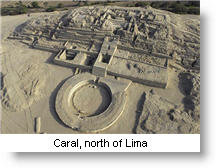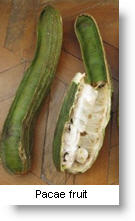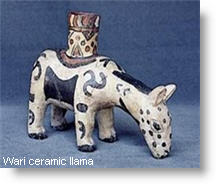By Paul Goulder – Special to Peruvian Times —
During the past year the Peruvian Times (see links below) has published a series of articles on the History of Peru spanning the years, very approximately, 3500 BC to 500 AD. At the beginning of this period humans were starting to live in towns, to build monumental religious sites, to specialize in trade and to form hierarchical societies.
Towards the end of the period political states had formed to the extent that two of them, Tiawanaku and Wari —probably in alliance and enjoying advances in metal technology (tin-bronze), food production and storage, political organization, etc— were able to impose economic control and cultural hegemony over substantial parts of what today are areas of Peru, Bolivia and N. Chile.
Arguably by 600 AD there are the makings of the first “empire.” So with a certain degree of hesitation we label the period up to about 500 / 700 “Before Empire.” Three empires then follow in rough succession: Wari-Tiawanaku to 1100, Inca 1200 to 1532/70 and Spanish from 1532 to 1821/5. In some areas of Peru the Wari influence, empire or hegemony declined earlier and the Inca arrived later, allowing a complete era termed (somewhat unhelpfully) the “late intermediate” to develop with a diversity of local names. For example, in the Lima area the period between the Wari and Inca occupations is called the Ischma (also rather unhelpful as few people appear to have heard of the term).
 From the “big picture perspective” on Peruvian History the old idea that Peru was a late starter, that its first cities were established well after those of, for example, Mesopotamia (and others in the fertile crescent) has had to be reassessed in the light of recent research (see Caral).
From the “big picture perspective” on Peruvian History the old idea that Peru was a late starter, that its first cities were established well after those of, for example, Mesopotamia (and others in the fertile crescent) has had to be reassessed in the light of recent research (see Caral).
This leaves us with a paradox. The big-picture historians maintained that the early development of the area which is now Peru would have been slowed down by the wiping out of large animals (possible future “Peruvian” horses, cows, oxen), by the late arrival of humans on the scene (though estimates are getting earlier) and the north-south orientation of the Americas (which made seed transfer more difficult).
 Fishin’ an’ huntin’ had begun to be replaced by fishin’ an’ gardenin’ around ten thousand years ago. First the pacae, the pallar (broad bean) and the chili were domesticated. Above all, Peru’s not-so-secret weapon was the sea so that by 3500 BC fishing allied with agriculture were producing sufficient surplus (spare capacity) to permit the construction of massive temple complexes.
Fishin’ an’ huntin’ had begun to be replaced by fishin’ an’ gardenin’ around ten thousand years ago. First the pacae, the pallar (broad bean) and the chili were domesticated. Above all, Peru’s not-so-secret weapon was the sea so that by 3500 BC fishing allied with agriculture were producing sufficient surplus (spare capacity) to permit the construction of massive temple complexes.
This relative abundance also allowed early Peruvians to “compensate” for the comparative advantage that cities in Eurasia were enjoying: ceramics, horses and carts (and thus the wheel) and the beginnings of writing. Almost as if the gods were saying “Look, develop enough compensatory investment and you will continue to overcome the natural geographic obstacles impeding your growth!”
However, it did not happen to a sufficient degree. By 500 AD Peru was about to embark on the tin-bronze age. But the alloying of copper and tin was achieved in Eurasia earlier. It seemed that the “technology gap” caused by “natural causes” in very ancient times was not going to be closed so easily. Technology gaps have been a recurrent aspect of Peru’s history. Independence from Spain (1821–1825) left the country with formidable problems with further gaps to bridge.
The History of Peru series
The History of Peru series begins as fishin’ an’ gardenin’ are getting into overdrive, especially in the river valleys or canyons sunk deep into the coastal desert pampa to the north of (what is now) Lima. Further still to the north (Ecuador) there is tropical rain and glasshouse temperatures: the living is easy. To the south it’s so dry that irrigation is too difficult and too expensive but in the valleys between Huaura and Casma, if you get your act together, irrigation is possible.
 Getting your act together means cities. There is abundance – but only if you trade cotton fishing nets for fish and are very careful in controlling the irrigation water. Specialization in production, trading centers, irrigation canal committees or overlords spell cities, or at least towns, but all this had become possible only because great-great-grandfather Quispe domesticated that first pacae, broad bean or chili and his cousin used one of the new-fangled fishing nets to measurably improve the MRP, the marginal revenue product, of fisher-folk.
Getting your act together means cities. There is abundance – but only if you trade cotton fishing nets for fish and are very careful in controlling the irrigation water. Specialization in production, trading centers, irrigation canal committees or overlords spell cities, or at least towns, but all this had become possible only because great-great-grandfather Quispe domesticated that first pacae, broad bean or chili and his cousin used one of the new-fangled fishing nets to measurably improve the MRP, the marginal revenue product, of fisher-folk.
This probably happened soon after the native multi-colored cotton plant was domesticated and netting invented around 7000 years ago – or perhaps before?
Frankly, the MRP of local fishing has not changed overmuch since then. Humans around the north-central coast by about 3500 were producing just that much extra so that enough labor could be spared to build pyramid-temples and maintain a class of chieftain-priests.
From this archaeologists deduce (really induce) that society was becoming ever more hierarchical: divided into castes and classes with slaves, including captured enemies, constructing Peru’s truncated pyramids as well as forming the base of its social pyramid —a period of clasismo formativo leading at the end of this section of history to the military clasismo expansivo of the Wari.
We have now arrived at about 3000 years BC, which is approximately where the Peruvian Times picks up the story. Links and a brief description to the parts already published are set out below.
HISTORY OF PERU SERIES – Part 1: The Dawn Of UrbanizationJune 23, 2010 This was the first in a series of articles on Peru’s history, incorporating stories from the Peruvian Times archives, as well as links to videos, audio and other external sources to provide a rich background of information. This first part deals with the formation of the first towns and ceremonial sites in the Americas. […]
HISTORY OF PERU SERIES – Part 2: Tour 3000 BC To 500 ADJuly 3, 2010 The second in a series on Peru’s history takes you on a tour through time, visiting four historic sites. Between them they span more than 3000 years of Peru’s development and cover (Part 1) the first towns, (Part 3) the age of U-shaped monuments, Chavin and Garagay, (Part 4) the decline of the Chavin unifying culture or cult and the transition period typified by the Huallamarka truncated pyramid in San Isidro, Lima and (Part 5) Peru´s first golden age which saw the emergence of the Moche, the Lima (Pucllana) and the Paracas-Nasca cultures. […]
HISTORY OF PERU SERIES – Part 3: Monumental ArchitectureJuly 18, 2010 Across the world, the period 3000 BC to 500 BC (approx.) was an era of monumental architecture. Think Stonehenge (UK), Carnac (France). And then think of the pyramids of Egypt. In the case of Peru the giant structures took on the form of truncated, flat-topped pyramid platforms – sometimes arranged in the form of a U. […]
HISTORY OF PERU SERIES – Part 4: Transition – The decline of Chavín and the rise of the Lima Culture: Huallamarca August 4, 2010 Following Part 3 we have now arrived at approximately 200 BC in our time tour. We have traveled in the series from the beginnings of towns through a long stretch of Peruvian history in which the development of monumental architecture, irrigation systems, ceramics and textiles are underpinning more complex social, political and economic structures. Chavin had given its name to an iconographic style. This unifying “early horizon” may have had roots in other areas. For example the Garagay site in San Martin de Porres predates that of Chavin.[…]
HISTORY OF PERU SERIES – Part 5: The Pucllana / Moche / Nazca Period September 3, 2010 A.D. 200 – 650/800. The Lima Culture: Betwixt or Amidst the Moche and the Nasca. The fifth in the series looks on as the Lima (Lurin, Rimac and Chillon valleys) culture spreads its wings yet coexists with the more exuberant Moche to the north and Nazca to the south. Peru was not just all-Inca. […]
HISTORY OF PERU SERIES – Part 6: Reading The Past, Righting The Record November 13, 2010 A simple visit to the Pucllana huaca has provoked some simple questions: Where´s the water supply? What language did they speak? What did their clothes look like? Did they write? We are at 200/500 AD and there are no wheels on our wagons – in fact no wagons yet. Before we start our next “time-tour” let’s try to answer three key questions. What system for record-taking did the ancient Peruvians have – could it be called writing? (Part 7) How did the pre-Wari cultures tame the desert with only elementary technology? […]
HISTORY OF PERU SERIES – Part 7: The Lima Culture and WaterJanuary 21, 2011 If writing had been a “scarce commodity” in the Pucllana period, water was another: water has always been western Peru’s number-one scarce – but perversely sometimes too abundant – resource. There had been varying years of a desert climate interspersed with rare mud slides and flash floods […]
HISTORY OF PERU SERIES – Part 8: Ancient TextilesMarch 31, 2011. Part eight has an overall look at Peruvian Textiles. Anyone who touches this subject realizes their beauty and their complexity. Some of the oldest and most amazing textiles in the world were preserved in desert graves for posterity. Somewhat pre-Picasso, the Wari people and empire (Peru AD 600 to 900) were “abstract artists” abstracting barely recognizable yet iconic […]
HISTORY OF PERU SERIES – PART 9: Metallurgy, Jewelry and Gold May 4, 2011 This week we examined the tools historians possess for analyzing the impact of new technologies, particularly in metallurgy. In terms of a time-line, this part starts in an age of copper and ends as bronze makes an appearance. But all the time it is gold that steals the show. […]
HISTORY OF PERU SERIES: The Peruvian Times Guide to the “End Menu” May 4, 2011 The End Menu contains all the links necessary to turn you into the leading professor of Peruvian studies. Unfortunately the Peruvian authorities or the gods don’t want you to be and tolerate all sorts of non-neoliberal obstacles to your right to Access Critical Knowledge. The end menu looks like […]
_________________________________________________
 Paul Goulder: Academic and specialist on Latin America and Peru. Last academic posts: ENSCP-Paris; King’s College, University of London; UNSA, Arequipa, Peru. Also not-for-profit work in ecology, development and education in UK and Peru.
Paul Goulder: Academic and specialist on Latin America and Peru. Last academic posts: ENSCP-Paris; King’s College, University of London; UNSA, Arequipa, Peru. Also not-for-profit work in ecology, development and education in UK and Peru.






